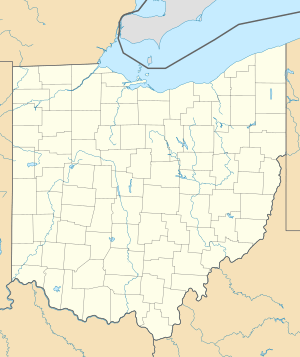Ottawa National Wildlife Refuge facts for kids
Quick facts for kids Ottawa National Wildlife Refuge |
|
|---|---|
|
IUCN Category IV (Habitat/Species Management Area)
|
|

A sandhill crane at the refuge
|
|
| Location | Lucas, Ottawa counties, Ohio, United States |
| Nearest city | Port Clinton, Ohio |
| Area | 6,857.91 acres (27.7530 km2) |
| Established | 1961 |
| Governing body | U.S. Fish and Wildlife Service |
| Website | Ottawa National Wildlife Refuge |
The Ottawa National Wildlife Refuge is a special protected area in Ohio, United States. It's a safe place for wild animals and plants. This refuge was started in 1961. Its main goal is to be a safe home for birds that travel long distances, also known as migratory birds.
The refuge is a great spot for many types of birds, especially those that fly south for winter and north for summer. It also protects local wildlife and animals that are rare or in danger. The land for the refuge was bought from old hunting clubs and farms. The money came from something called Federal Duck Stamps.
The refuge covers about 7,000 acres (28 km2) of land. This area has always been important for fish, water birds, songbirds, and shorebirds. Many migrating songbirds stop here to rest during their spring journey. This makes the refuge a very popular place for people who love to watch birds. It's a great spot for birdwatching all year round, not just during migration season. The refuge is also home to several bald eagles.
Ottawa National Wildlife Refuge is recognized as an important place for shorebirds in the Western Hemisphere. In 2002, readers of Birder's World magazine said it was one of their top 15 favorite places to see birds. The American Bird Conservancy also calls it an Important Bird Area.
History of the Ottawa Refuge
When the Ottawa National Wildlife Refuge first began, it was much smaller. It started with about 4,682 acres (18.95 km2) of land. The main idea was to save a part of the huge wetlands that used to be along Lake Erie. Over time, the refuge has grown to its current size of about 7,000 acres (28 km2).
The land was bought using money from the Migratory Bird Conservation Act and the Hunting Stamp Act. This act is also known as the Duck Stamp Act. The staff at Ottawa National Wildlife Refuge also helps manage two other important sites. These are the Cedar Point and West Sister Island refuges.
Together, these three refuges cover over 10,000 acres (40 km2). They help protect some of the last parts of the Great Black Swamp. This swamp is a very important wetland area located in the heart of the Lake Erie marshes.
Exploring Ottawa's Wildlife and Nature
There are many fun ways to explore the Ottawa National Wildlife Refuge. You can walk on the dikes, which are special paths that help control the water levels in the refuge's pools. Another way to see the refuge is by driving along the Wildlife Drive.
The Ottawa visitor center also offers special Tram Tours. These tours let you ride through the refuge and learn about the animals and plants that live there. It's a great way to see a lot of the refuge without walking too much.



